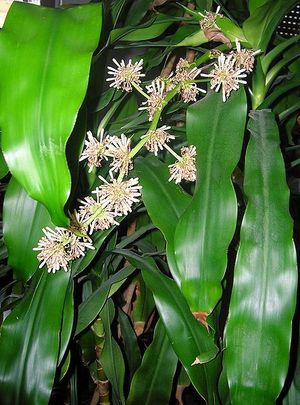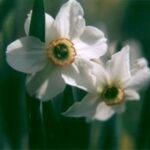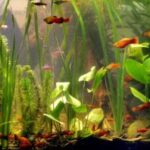We’ve had a fascination with Dracaena plants for thousands of years. This extremely diverse genus, which derives its name from the Latin word for a female dragon, most notably includes the dragon’s blood tree , touted throughout history for its richly fragrant, blood-red resin. The now-endangered dragon’s blood tree doesn’t grow readily indoors, but its many close relatives are among the most beautiful and earth-friendly house plants available.
Studies through NASA and Wolverton Environmental Sciences have demonstrated that several species of Dracaena house plant can filter pollutants like formaldehyde, benzenes, ammonia, and (of course) carbon dioxide from the air. This not only means better health for you, but also better health for the planet– all thanks to a few showy, compact little house plants! Here are the Dracaena house plants that can purify your air, according to researchers:
Janet Craig’s Compact Dracaena
Known scientifically as Dracaena fragrans “compacta” and commonly as the “green corn plant,” the Janet Craig Dracaena was designed to be a pint-sized version of its larger cousins, the dragon trees. The Janet Craig compact Dracaena tends to stay small– under one to two feet– meaning that you can keep dozens of them in one room! This compact variety doesn’t look at all like a tree or shrub; instead, it looks like a spreading, ornate cluster of broad, dark-green leaves. Because it needs very little sunlight, it’s an ideal way to keep your home green year-round, even if you don’t get a lot of sunlight indoors. Studies suggest that the Janet Craig can eliminate benzenes, ammonia, and formaldehyde from your indoor air, and it also helps to soak up a little bit of the carbon dioxide your body naturally produces.
Warneck’s Dracaena
A close relative of the Janet Craig Dracaena, Warneck’s Dracaena is similar in appearance and in its ability to purify the air in your home. A Warneck’s Dracaena differs from its cousin in that it possesses beautiful, multicolored foliage with stunning stripes of green and silver. This, combined with its air-cleaning properties, earned the plant the common name “striped Dracaena,” along with an esteemed Award of Garden Merit from the Royal Horticultural Society. It isn’t as easy to care for as the Janet Craig Dracaena, because it requires more sunlight and grows quite a bit larger– but it makes up for its slightly more difficult care by providing clean air and profound beauty.
Massangeana Dracaena
Another very close botanical relative to Warneck’s Dracaena and the Janet Craig Dracaena, the Massangeana is more earth-friendly than its close relatives because it needs less water– and this also makes caring for it much easier! The Massangeana is very effecient in removing airborne pollutants, and it grows into much more exotic, tropical, tree-like shapes than the Warneck or Janet Craig. Massangeanas can grow up to several feet in height and have thin, cane-like trunks with clusters of vivid yellow and green foliage on top. Many would consider them the most visually striking of the air-cleansing Dracaena plants.
Madagascar Dragon Tree
This is the largest of the popular Dracaena varieties grown indoors, topping out at around six feet when mature. It has a strikingly tropical, exotic appearance and measurably reduces levels of ammonia, benzenes, carbon dioxide, and formaldehyde in homes, all while churning out the oxygen we need to breathe. The Madagascar dragon tree has very narrow, dagger-shaped leaves, which can be any of several colorful, showy varieties. If you want an air-cleansing plant that looks truly reminiscent of the tropics of Africa, this one is likely your best choice.
A Warning for Pet Owners
All species and varieties of Dracaena are, to some degree, toxic to cats and dogs, according to the ASPCA. Although they have not been known to cause death in affected pets, they can cause serious disturbances like vomiting (sometimes with blood!), fatigue, poor appetite, and excessive drooling. If you have pets who are prone to nibbling on house plants, it’s best to avoid getting any variety of Dracaena plant, and to rely on other types of house plants to purify your home.
What’s your favorite Dracaena variety, and why?






